 Long before books and the Internet, women were breastfeeding their babies. How on earth did they manage without all the instructions about asymmetrical latch, C-hold, cross cradle and football holds and wide gape?! They managed because back then, breastfeeding was the norm, and you learned to breastfeed by watching your mother, sisters, aunts and friends breastfeed. It wasn’t the mystery that it often seems to be today when many women have never even held a newborn baby before their own, let alone seen someone breastfeed. We are meant to learn about breastfeeding by watching others, not by reading about it in books or on-line. In today’s society however, the art of breastfeeding has been lost, and instructions have become necessary.
Long before books and the Internet, women were breastfeeding their babies. How on earth did they manage without all the instructions about asymmetrical latch, C-hold, cross cradle and football holds and wide gape?! They managed because back then, breastfeeding was the norm, and you learned to breastfeed by watching your mother, sisters, aunts and friends breastfeed. It wasn’t the mystery that it often seems to be today when many women have never even held a newborn baby before their own, let alone seen someone breastfeed. We are meant to learn about breastfeeding by watching others, not by reading about it in books or on-line. In today’s society however, the art of breastfeeding has been lost, and instructions have become necessary.
Traditional latching instructions usually include advice to use a “C” or “U” hold on your breast, to tickle your baby’s lips with your nipple, wait for him to open wide and quickly pull baby closer. Then you’re supposed to look for “fish lips” and a certain amount of areola showing above baby’s top lip, etc. In recent years, a lot has been written about the importance of an “asymmetric latch” and there are lots of available descriptions about the various holds that you can use with your baby. Often, the “instructions” for getting a good latch are confusing, hard to visualize, and cause parents to stress about “getting it right.” New research, however, has recently lent insight into the process of “latching on.” This new research has changed the way that many breastfeeding professionals talk to parents about latching.
The most important thing to come out of the latest research, is the confirmation that babies know what they’re doing! The most profound example of this, is the fact that an unmedicated baby placed on his mother’s abdomen after birth is capable of finding her breast, and latching on, just like any other mammal (often referred to as breast crawl). Babies are born with instincts and reflexes that help them to find their mother’s breast and figure out what to do once they get there. Suzanne Colson’s recent work on biological nurturing teaches us about how positioning can make a big difference to breastfeeding success, and that a baby’s reflexes can work for or against breastfeeding, depending on the position that the baby is being held in. Biological nurturing involves having mom in a semi-reclined position, and letting baby lead the way with latching while mom helps as needed. The reclined positioning is important because it releases reflexes that help baby to find mom’s breast and latch on.
There is also some important new research from Catherine Watson Genna about how babies use their hands to help with latching on. Her research brings to light the fact that those little hands that keep getting in the way when you’re trying to bring your baby to your breast, are actually making purposeful movements trying to help with latching! For years we’ve been advising mothers to tuck those little hands out of the way, and now we’re discovering that it’s important for babies to have their hands free. If your baby’s hands are in the way, it is probably because he can’t feel your breast with his face, so he is searching with his hands for your nipple. Cuddle your baby closer so that his face is against your breast, and those little hands will likely move out of the way.
Some women seem to find the reclined positioning of biological nurturing awkward at first, perhaps because it is not what we are used to seeing. We are far more familiar with upright positioning for nursing, and many new moms are more comfortable with this when learning to latch. If the upright positioning is more comfortable for you, then you can use what some in the lactation community call “baby led, mother sped” latching, where mom places baby at the breast in the right position to latch on. Once your baby is latched on, you can then lay back into a more reclined position if it is comfortable for you.
Main points to remember for “baby led, mother sped” latching:
- Sit back and relax. Many new moms have a tendency to sit forward and lean over their baby. Make yourself comfortable and bring your baby to you. If need be, focus on keeping your back against whatever you’re sitting on. It is preferable if you’re not in a straight backed chair. Being able to lean back a bit helps your baby latch on.
- Your baby’s whole body should be turned towards you, so that your baby is not having to turn his head to find the breast. One thing that I often see is baby’s head and chest are turned towards mom, but baby’s hips aren’t, which tends to pull baby away from the breast. If your baby’s body is turned completely towards you (so the two of you are tummy to tummy), and you are sitting back, then gravity helps to keep your baby in place. In this position, your baby feels secure, and it helps to release those newborn reflexes that help with breastfeeding.
- Snuggle your baby at the height of your breast, where it naturally lies. For many moms, this means get rid of the nursing pillow! Pillows work for some women, but certainly not all. Often, the pillow puts your baby above the height of your breast, and you end up having to lift your breast to reach your baby. The problem with this is that when you let go of your breast, gravity pulls it out of baby’s mouth. Supporting your breast with your hand is fine, but if adjustments need to be made, move your baby not your breast. If you’re sitting back in a slightly reclined position so that gravity can help to keep your baby in place, a pillow really isn’t necessary.
- Pay attention to where your hands are. The hand supporting your baby’s head should not be on the back of baby’s head (this triggers a reflex in babies that causes them to push back against your hand, and away from your breast. Some babies are sensitive enough that even a finger up the back of their head will trigger this). If you are supporting your baby’s head with your hand, place your hand around the base of your baby’s skull, with your fingers just below baby’s ears. If you are supporting your breast with your other hand, make sure that your fingers are well back from the areola so that they are not in the way of your baby latching on.
- It’s important to remember that your baby finds your breast mainly by feel. Your baby needs to be able to feel your breast with his chin/cheeks in order to figure out where he is. This means that your baby needs to be snuggled in nice and close, with his chin already touching your breast before he latches on. The ideal position for your baby to be in is with his nose opposite your nipple. This allows your baby’s head to tip back slightly, and it places your baby in the best position to get a comfortable latch. If need be, shift your baby’s body towards the opposite breast to get your baby in the right position. When your baby feels your breast with his face, it triggers him to open wide. When he does, all you need to do is snuggle him closer using the hand that is supporting his neck and shoulders. If need be, you can use the thumb of your other hand on top of your breast to help guide your nipple under his top lip. Tickling your baby’s lips with your nipple puts your baby in the wrong position for getting a good latch and confuses your baby because he can’t feel your breast with his face. This usually causes a baby to shake their head back and forth as they search for the breast.
- Once your baby is latched on, you can use pillows, folded blankets etc to support your arms or hands as necessary for comfort.
This may seem like just another big list of latching instructions, but really most of it is reminders about positioning. This is because positioning makes a big difference when it comes to getting a good latch. Here’s the short version:
- Sit back and relax
- Bring baby to you with baby’s whole body turned towards yours
- Chin to breast, nose to nipple and snuggle your baby closer when he opens wide
Notice that there are no instructions about how to hold your breast, what baby’s lips should look like, how much areola you should see etc. That’s because for most women those things don’t matter. If you need to support your breast, hold it however it is comfortable for you. As for what the latch looks like, what is far more important is how it feels. If your baby’s latch feels comfortable and your baby is getting enough milk, then everything is good no matter what it looks like! Some latches don’t look “right” from the outside, but if it’s working for mom and baby, no need to mess with it. Some latches can look great from the outside, but if mom is in pain, something is wrong. When your baby is latched correctly there should be no pain, and after nursing your nipple should look the same as it did before nursing. If your nipple appears pinched or flattened after feeding, this is a sign that either your baby’s latch still needs some work, or something else is going on (such as tongue-tie or other sucking issues) that needs to be addressed.
A good latch is essential for your comfort, and effective milk transfer by your baby. If you are having problems, get help as soon as possible to avoid running into even bigger problems down the road. The longer you wait to get help, the harder it can be to turn things around. If your reading this while pregnant, we highly recommend attending La Leche League meetings, or some other kind of breastfeeding support group before the birth of your baby, so that you have a chance to learn about normal breastfeeding from the pros: breastfeeding moms!
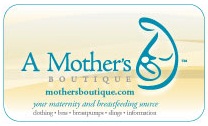 |
 |
Brought to you by A Mother’s Boutique and Hot Mama Gowns!
Fleur Bickford is a nurse, lactation consultant, and mother of two. She’s passionate about helping families discover the joys of breastfeeding, birth and parenting, and providing parents with evidence based information. She is a private practice lactation consultant in Ottawa, Ontario. You can find more information about Fleur on her website, www.nurturedchild.ca.



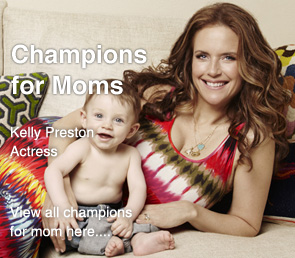



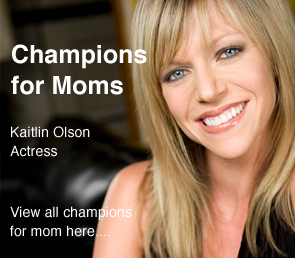
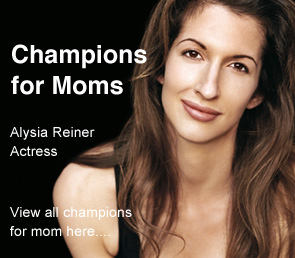
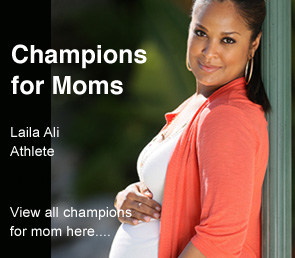
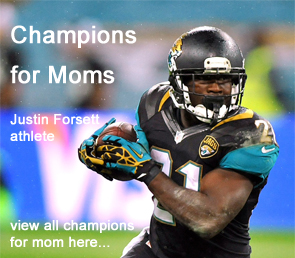

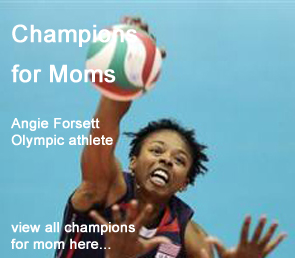

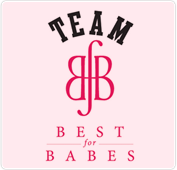
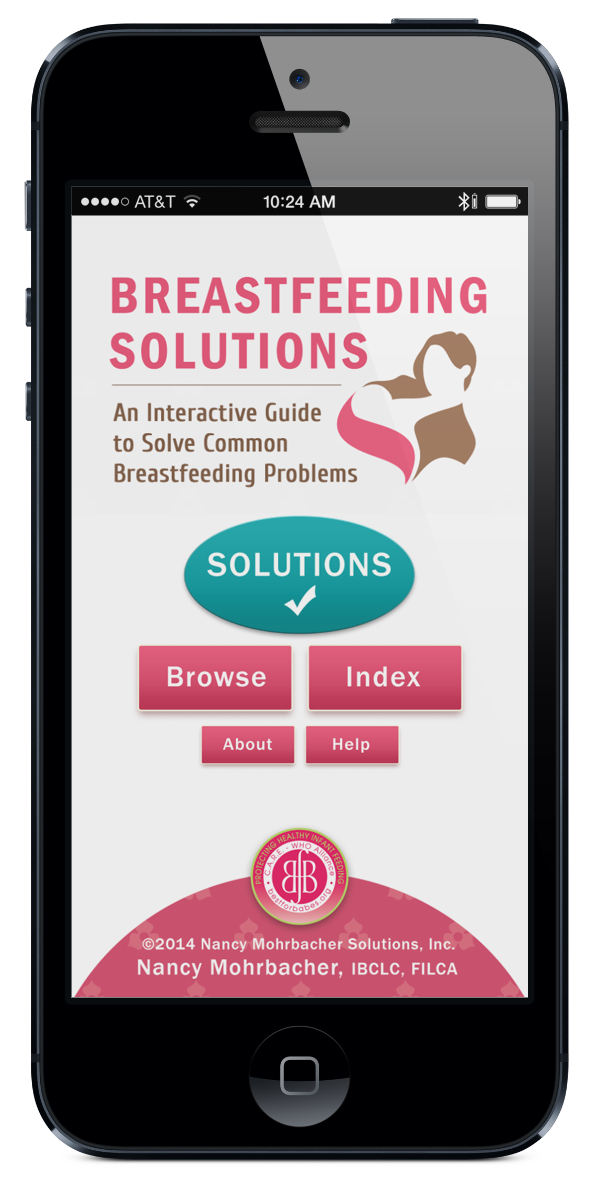
I wish I had read this 9 months ago! I got lots and lots of advice by BF support workers at the hospital, midwives and health visitors which at the time I was so thankful for yet totally paranoid as I didn’t seem to be doing what they told me.
Looking back, knowing what I know now, my boy was getting fed, I was pain free and he was comfortable. Ok so I wasn’t showing the ‘right amount of areola’ or holding him in a football hold but it worked for us!
Still now we do it exactly as we did it that very first time minutes after he was born.
I’m glad I got all the advice, but I wish I’d just relaxed more about it and not felt pressured into doing it differently (for a short while) even though it was already working well!
What I would have done to have had this article when my baby and I were learning to breastfeed! I thought it would be a doddle and didn’t do any research until it was too late and I was in terrible pain. To make matters worse, every book, midwife, video, all mentioned something new and different. That is until one of the health visitors told me to get out the way and let my baby do what she knows how to do. It felt odd at first and quite difficult, however after time we worked it out. My baby is now 19 weeks and I don’t do anything other than put her to my breast and she does the rest, I don’t even touch my breast. This is very different compared to what I was doing! Thank you for a great article, one I’ll share with my facebook friends
BRAVO- HOORAY- GREAT advice.
As a postpartum doula I try valiantly to help my breastfeeding clients succeed. Your advice to let the baby lead is the best I’ve seen in a long time.
Babies are survivors and know what to do… but we ( and the hospitals) need to trust them.
I became a postpartum doula precisely because of the troubles I had getting breastfeeding up and functioning only to be told by my pediatrician when my daughter was 6 weeks old that I needed to switch to forumula. That was in 1970, when she was the ONLY breastfed baby in a hospital in NYC. My goal as a postpartum doula is to help every mom who wants to breastfeed succeed.
Postpartum doula, good for you Elaine. I could imagine getting the support during pregnancy and the birthing process is great, but support postpartum is just as important. A friend of mine is working on becoming a doula and she explained the purpose of having a doula. Once she was done I asked, so does a doula support after birth? She said no, but I’m glad to know that there is postpartum help. Postpartum help is just as important.
Excellent article. I work as a breastfeeding support RN with moms and new babes in the early hours after birth. We teach/demonstrate/encourage mothers to use all the baby led ideas and find even the c/s babes self attach well… Which their mothers love to see. One thing I also suggest to work with the newborns reflexes, is to have mom place one hand under babes’ feet to assist with the crawling reflex, it helps babe to have something to push against, much like the walls of the womb when s/he was practicing.
I also wish I had read this before my baby was born! After a couple days, I tried the layback method and she latched right on. But the “comfortable” part was what always threw me off. I had a sharp stinging at latch for weeks and weeks. It was so painful that we learned to side-lie nurse because I tensed so much when she latched, that she would immediately pull off, making it even more painful. She was getting plenty of milk and I had no supply issues. I just wish someone had told me that nursing is painful at first, not just a bit “uncomfortable” or slight “soreness.” Great article! I think it will help a lot of first-time nursers!
Is it too late for my baby to get a good latch? She’s almost three months (11 weeks). She has had a shallow latch no matter what I do. If I don’t do the cross cradle hold AND pinch my breast to force it into her mouth she just nipple feeds. When I try to let her lead, it’s all nipple and it just kills. I had her evaluated for tongue tie and she did have a slight one, but that was at 5 weeks and I”m worried she already was in the bad habit of a shallow latch and I’m just destined to be in pain for the year or two I want to nurse.
It’s never too late, not for you nor for the mom with the four month old twins who posted after you! It sounds like you are both doing a great job! You mentioned that your baby was evaluated to have a slight tongue tie at five weeks, but you did not mention whether or not the tongue tie had been fixed. I work as an IBCLC (International Board Certified Lactation Consultant) and have been helping new moms breastfeed for the past 21 years and love doing it. One thing I love about the Biological Nurturing website is that it talks about how there are many different ways to breastfeed. Every mom and every baby is different. There is nothing wrong with doing the cross cradle hold AND pinching your breast, if that helps you and your baby get a more comfortable latch. There was even an article in the Journal of Human Lactation a few years ago about some research that was done which found less plugged ducts in women that held the breast for the baby throughout the feed. Getting the baby’s frenulum clipped can usually be very helpful at any age. As a lactation consultant I’m finding out more and more that it is often the “slight” tongue ties that interfere with breastfeeding more than the more obvious ones. Your baby is constantly growing and changing and learning new things. There’s no reason she can’t learn to get a better latch, too, even if she is “in the bad habit of a shallow latch.” It takes time for baby’s to build up their jaw muscles, so give her lots of praise and encouragement, just as you will cheer her on when she learns to crawl and walk. It’s great that you want to nurse for a year or two. Be sure to let the Lactation Consultants you work with know that you plan to nurse that long. Helping moms breastfeed can be hard work, too. Unfortunately, many of the moms we work with are not very dedicated to breastfeeding. They only want to “try” breastfeeding but say that they will not be heart-broken if they are not able to breastfeed very long. I give them kudos for trying and appreciate their honesty. I always tell them any amount of breastfeeding is better than no breastfeeding. But I try to dedicate most of my time at the hospital helping the moms who really want to breastfeed. I loved breastfeeding with both of my children, so it is very rewarding to be able to help other moms. Attending La Leche League meetings helped me a lot with both of my children. I would urge you to attend your local La Leche League meetings, and also work with as many International Board Certified Lactation Consultants as you can. Many moms get frustrated, if they work with several lactation consultants, and each one tells them to do something slightly differently. But please be open minded. Breastfeeding is really an art, so there is no one right way of doing it. Try different things and see what works best for you and your baby. Remember, your baby will teach you more than anyone else. And tune in to your body, as you are, and do what is most comfortable for you. You can find a lactation consultant through the website of the International Lactation Consultant Association, ILCA.org. We had one mom who was very determined to breastfeed. She worked with at least four of the lactation consultants at our hospital and at least one of the lactation consultants at another local hospital. When none of us were able to help her as much as we would have liked to, she emailed Dr. Jack Newman. He is a pediatrician and lactation consultant in Canada. One of his lactation consultants then emailed her back with some valuable tips. If there is no one in your area that can help you, you may be able to attach a video clip of your baby latching and email it to a lactation consultant in another location, and get tips on latching from them. In the mean time, together with your pediatrician, keep close tabs on your baby’s growth. Don’t be afraid to “shop” for a very breastfeeding knowledgable and supportive pediatrician. No one is perfect, and no one knows everything. Probably more important than how much they know about the art of breastfeeding, is how much they care about supporting you in your efforts to nourish and nurture your baby! The main problem that we see when moms have sore nipples is that the baby doesn’t get the milk out as well as they can when they get a comfortable latch, so they struggle with their weight gain and moms struggle with their milk supplies. So don’t hesitate to pump if necessary and/or collect milk with a milkies (see mymilkies.com), and supplement with your milk to keep your baby healthy. I always tell moms, as long as you keep your baby well nourished and maintain your milk supply, you can always work on the latching. I have even talked with moms who had to quit nursing for several months, didn’t even pump during that time, and still were able to start nursing again and went on to breastfeed long term. This is very unusual, but when there’s a will there’s a way! Good Luck!
I just took a class on biological nursing, part of continuing education. It is great to see information here - where I know many mothers will read it! Great way to describe it, you can picture what needs to be done. Wonderful!! =)
This is great advice! I teach childbirth classes and include breastfeeding as well. I cannot tell you how many moms are surprised to find if they relax and take it easy that babies will begin to breastfeed. I just showed my students a breast crawl video, and they were amazed that an hour old baby could nurse on her own. Thanks for writing this!
thank you for the post. it is true we are meant to learn by viewing others breastfeed but unfortunately it’s just not the norm any more.
I spent a whole day this week listening to Suzanne Coulson talk about biological nurturing, and I think I’m beginning to catch on. The key is to let the baby sleep on mom’s breast, and when the baby is in a drowsy state, mom can ease baby onto the nipple. Mom will be laying back a bit, so baby’s weight is on her body. If baby is sound asleep in the crib, basinette, or whatever, mom picks the baby up, plops it on her body, and proceeds as above. Doesn’t have to be skin to skin, but baby needs to be able to be face to bare breast. Babies can latch on and nurse IN THEIR SLEEP! Experienced nursing mothers have frequently done this with their babies, because it keeps the baby asleep! And if the baby was ready to come awake anyway, now the baby is coming awake with a full tummy after a pleasant sleepy nosh on the breast. Suzanne explained that a drowsy baby has a very slack jaw, allowing a big, wide open mouth! Wish I’d known about this a long time ago, and I look forward to trying it out with some new moms. So ladies, don’t let a sleeping baby lie-pick it up! When it is laying on you smelling dinner, it will become more lightly asleep, the same way you would wake up because you smell coffee, and maybe breakfast cooking.
Hi, I wanted to know if it was too late after four months for the baby to latch on? I had twins and it was extremely difficult in the beginning and ended up pumping and now i am able to hold onto the babies with a firmer grip. Was wondering.
Do let me know if you guys know.
Amanda Peers
Work from home mom creating Customized Baby Bibs
I teach this method in all of my pre natal breastfeeding classes. Soon-to-be moms are so surprised by the babies’ capabilities in the Biological Nurturing videos and are very willing to try to become more ‘laid back’, both in position and mentality. I love the smile on a new mom’s face when she is laid back, relaxed, and the baby latches on without much assistance. It truly is a magical moment!
http://www.sdbfc.com/blog
Good advice. I almost gave up on breastfeeding my first child because I wasn’t able to grasp all the advice about the proper holding, mouth, areola, nipple, holding, squeezing, etc. It was frustrating that I didn’t know “how to breastfeed” but you know it happened when I relaxed, placed my baby up to the breast and he latched right on.
I’m reading this for the first time. My baby is now 11 weeks old. We have been spending our days and nights working on a Breastfeeding relationship. Last week it was finally confirmed that she was tongue-tied, after seeing 3 Pediatricians and 3 different lactation consultants, which mommy instinct told me all along, and it was snipped. My baby Loves to Nurse in fact she SCREAMS when I offer her a bottle. We do lots of skin to skin and co-sleep. The problem has been her poor weight gain and my dwindling milk supply- even with pumping every few hours. I had to feed her by pumping out all my milk and giving it with a syringe. I’ve also been supplementing with formula. This past month she has been now gaining an ounce a day.
So, here we are at almost 3 months old and she only nurses for what appears to be “pleasure.” I’ve been on tons of forums and reached out to dozens of professionals and even had an IBCLC come to my home. I’m praying for the day when she will breastfeed for Nourishment. I’m just starting to lose some hope here…. Any advice or resources would be greatly appreciated!
Thank you! Christine@momscoachforlife.com
Great advice…except for the fact that it doesn’t work. My baby, when allowed to latch on her own like at the hospital after birth, causes excruciating pain. And even when assisted, still compresses the nipple. Mommies, be aware that this may not work for you.
Pingback: BF Chicago Frequently Asked Questions | Breastfeed Chicago
Pingback: Pressures of breastfeeding | Jennifer Carnegie